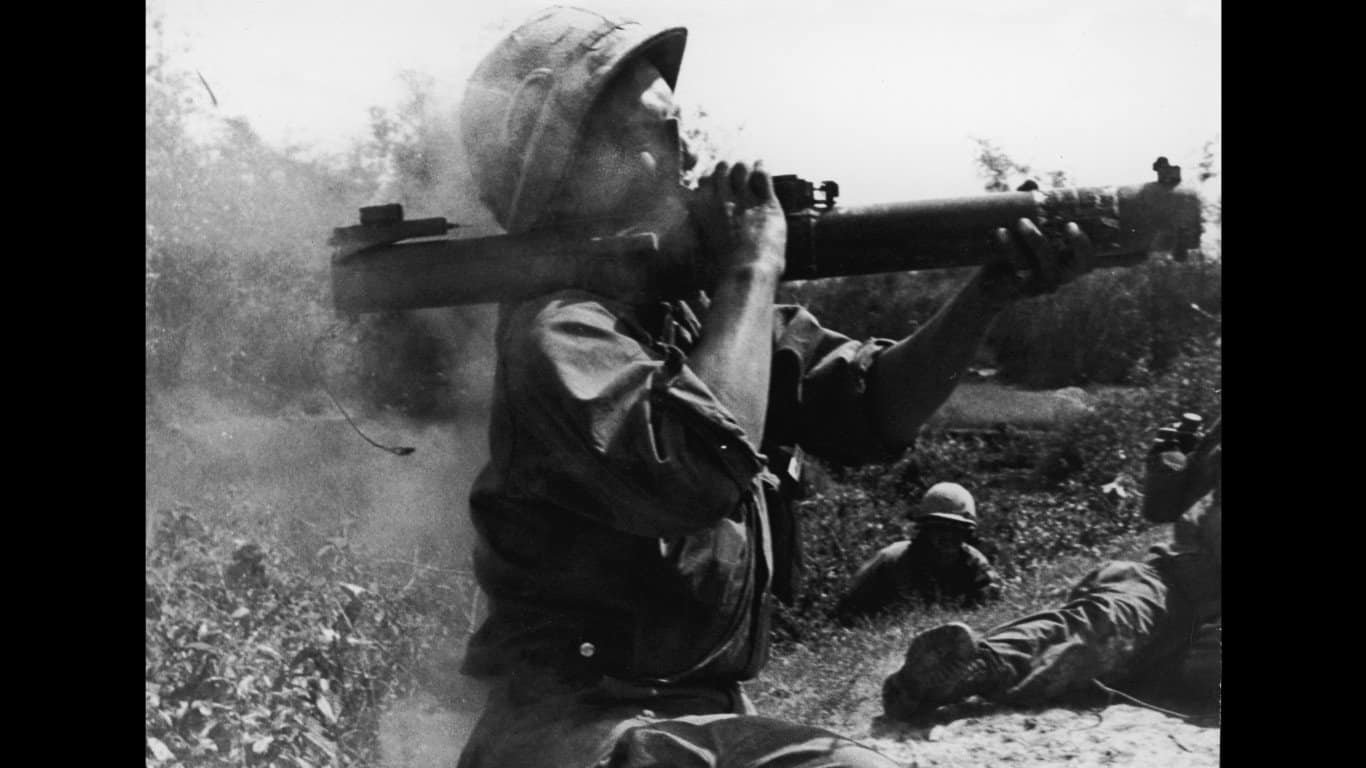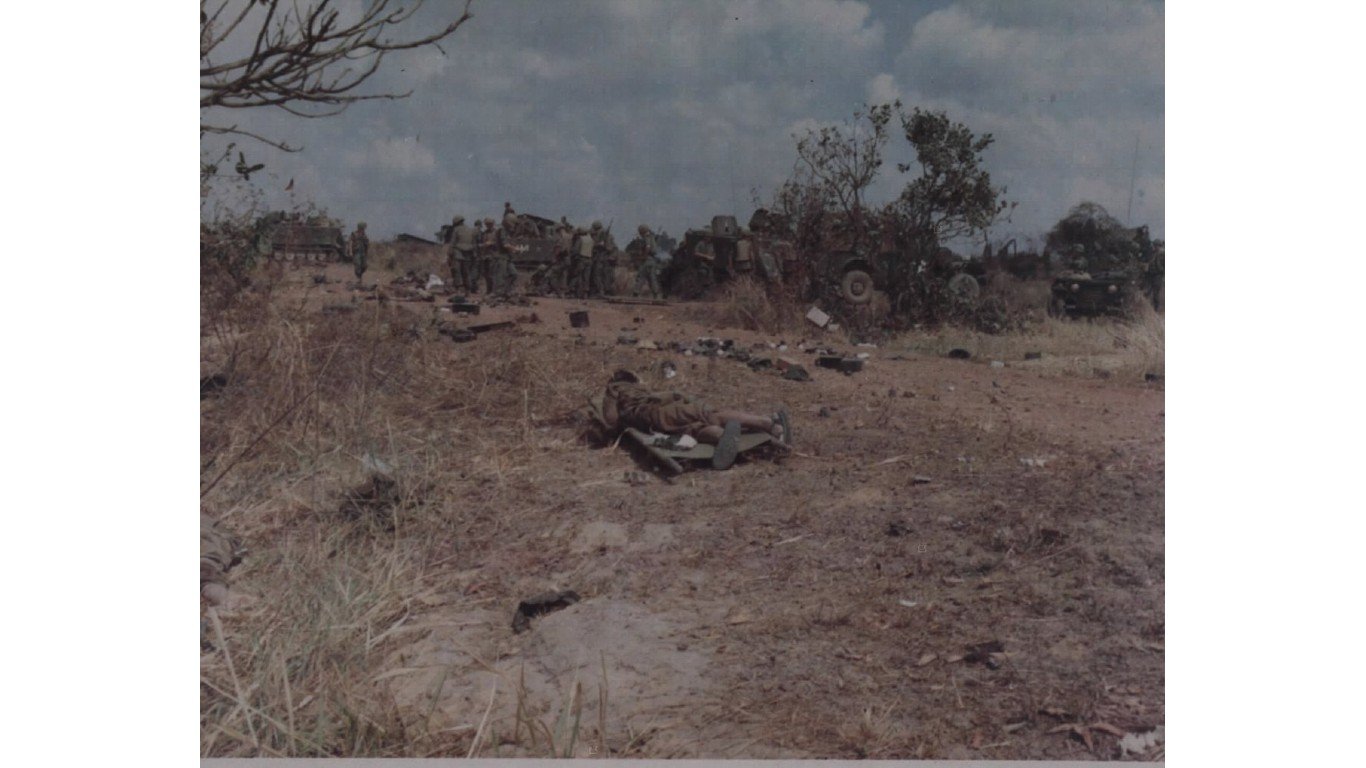The Vietnam War was long and brutal, one that was fought over 20 years. Known as the first television war, this was the first major armed conflict to be broadcast live into American homes through TV news and was considered a hallmark in the history of journalism. Journalists were able to record live from the battlefield and their coverage was often uncensored. This enabled Americans to witness the brutal realities of war – aerial bombings, infantry battles in jungles and rice paddies, villages engulfed in flames, and the suffering of the Vietnamese people.
There were more than 600 journalists on the ground to cover the war. Unforgettable images were captured by brave photographers around the world, including Pulitzer Prize winners Horst Faas and Sal Veder. Despite grave risks, these photojournalists recorded the combat and aftermath with striking photographs. Some, like Dickey Chapelle, lost their lives documenting the war’s harsh truths. She became the first female American correspondent killed in action
24/7 Tempo reviewed historical photo archives from sources including Getty Images and the Library of Congress to assemble a collection of some of the most terrifying images of the Vietnam War by a variety of photographers – some of them unknown. Photojournalist Nick Ut became the youngest photographer to win the Pulitzer Prize for capturing horrifying images, specifically “The Terror of War” (also known as “Napalm Girl.”)
America was involved in combat operations in Vietnam from 1964 to 1973, one of the nation’s longest wars. By the war’s end, 58,000 American soldiers had perished. The war split the nation in two and damaged confidence in America’s role as a superpower. At home and in Vietnam, photographers captured the tremendous fear, chaos, anguish, and division spawned by the conflict. (Here are famous Americans who became anti-war activists.)
Here are haunting images of the Vietnam War
Bombing a coastal target

A U.S. Air Force Strategic Air Command B-52 Stratofortress drops 750-pound bombs on the Vietnamese coast in October 1965.
A blindfolded prisoner
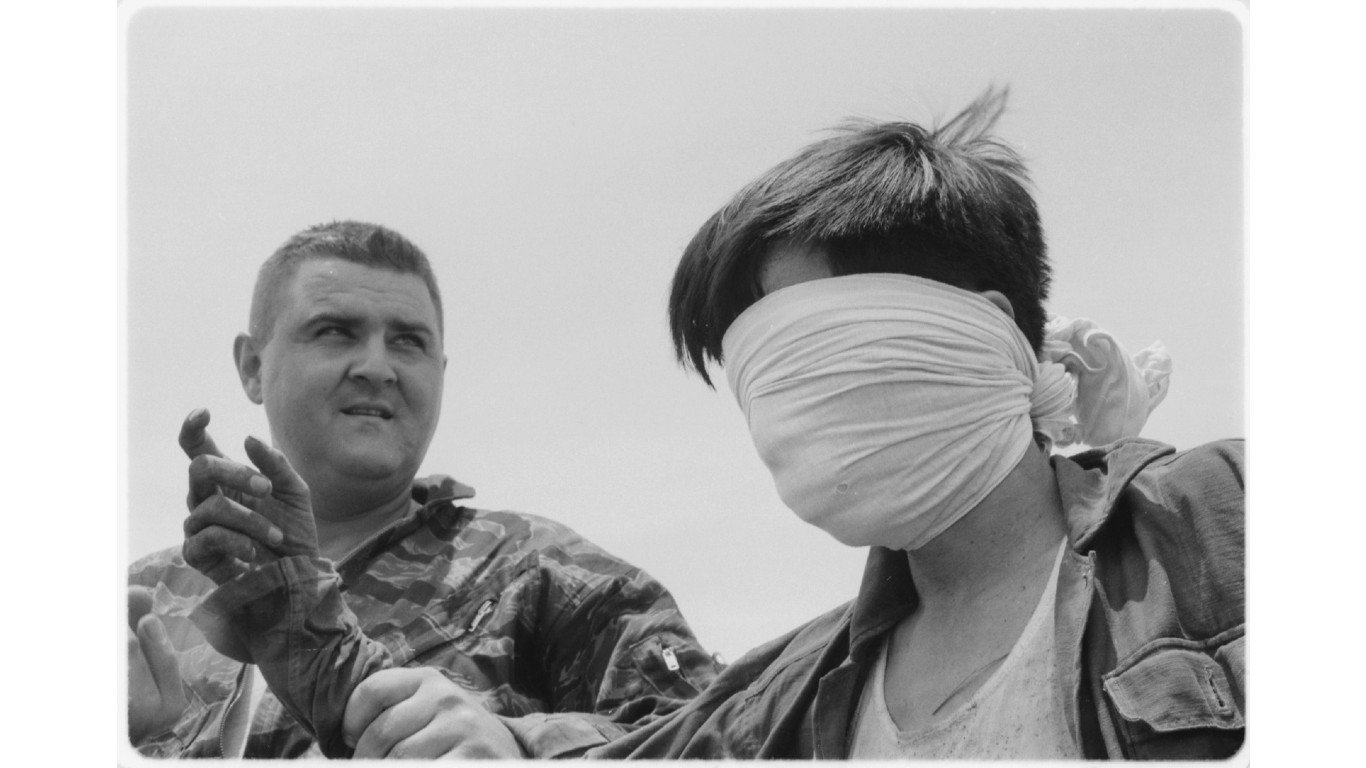
Staff Sergeant R.E. Steffy binds and blindfolds a Viet Cong fighter who was taken prisoner in Van Tuong in August 1965.
Saving a comrade
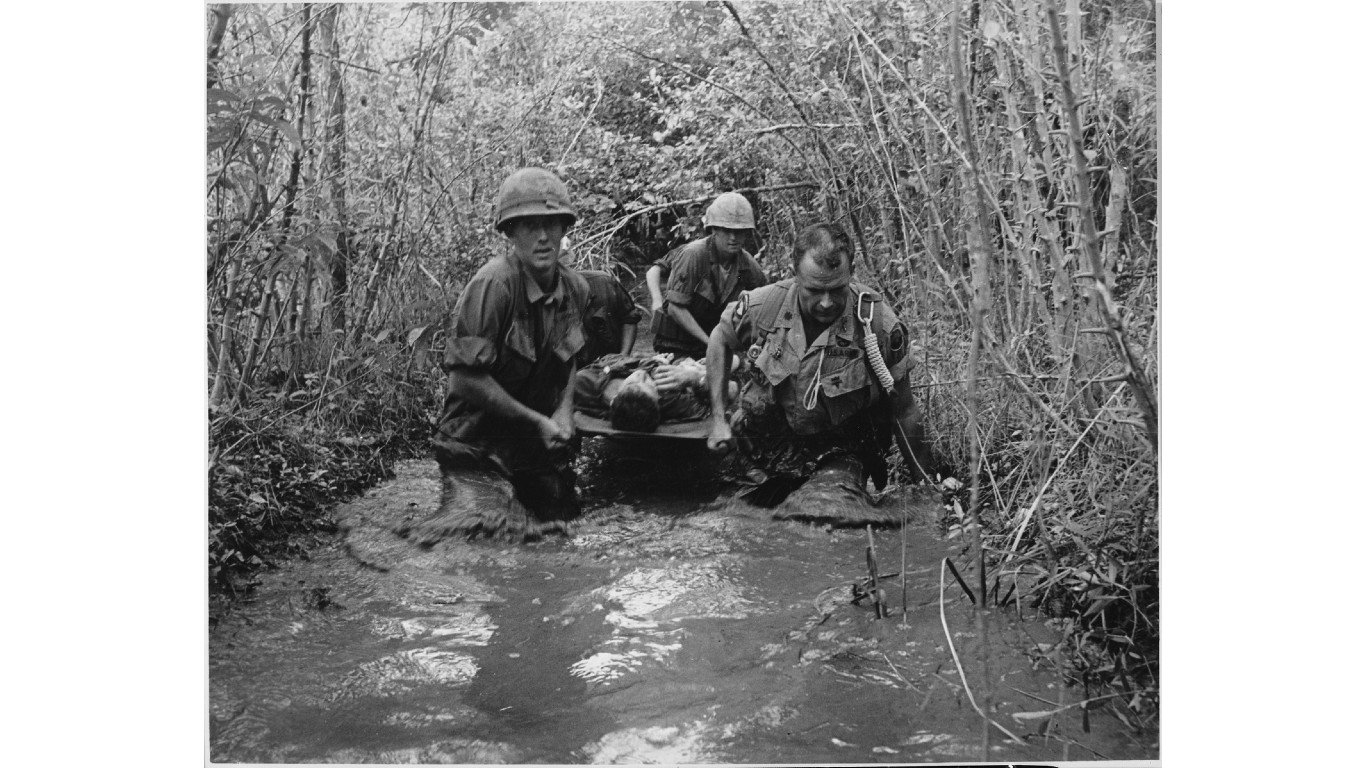
U.S. soldiers carry a wounded comrade through a swamp in 1969.
An American POW
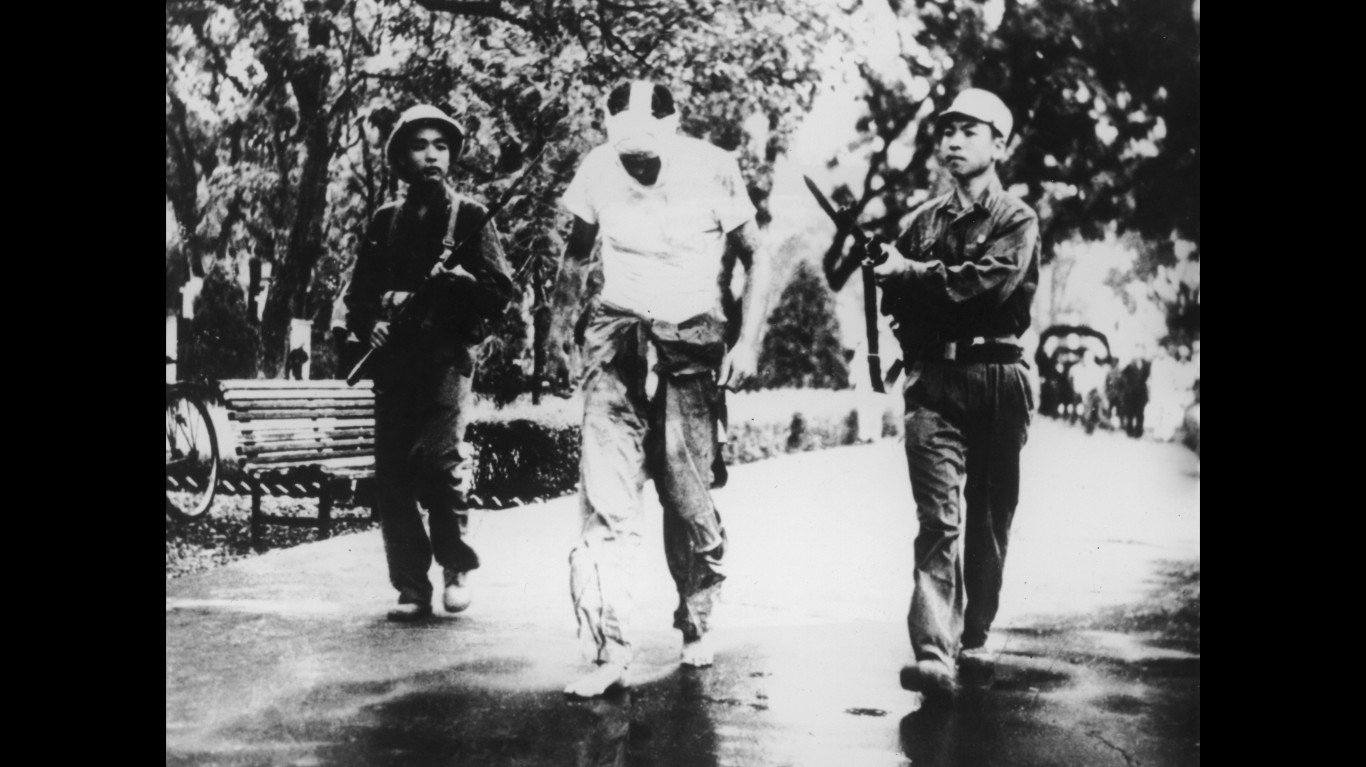
U.S. Air Force Lieutenant Colonel James L. Hughes, forced to eject from his F-105 over North Vietnam on May 5, 1967, is paraded barefoot and with a bandaged face through the street by two North Vietnamese soldiers during the Vietnam War.
Training for action
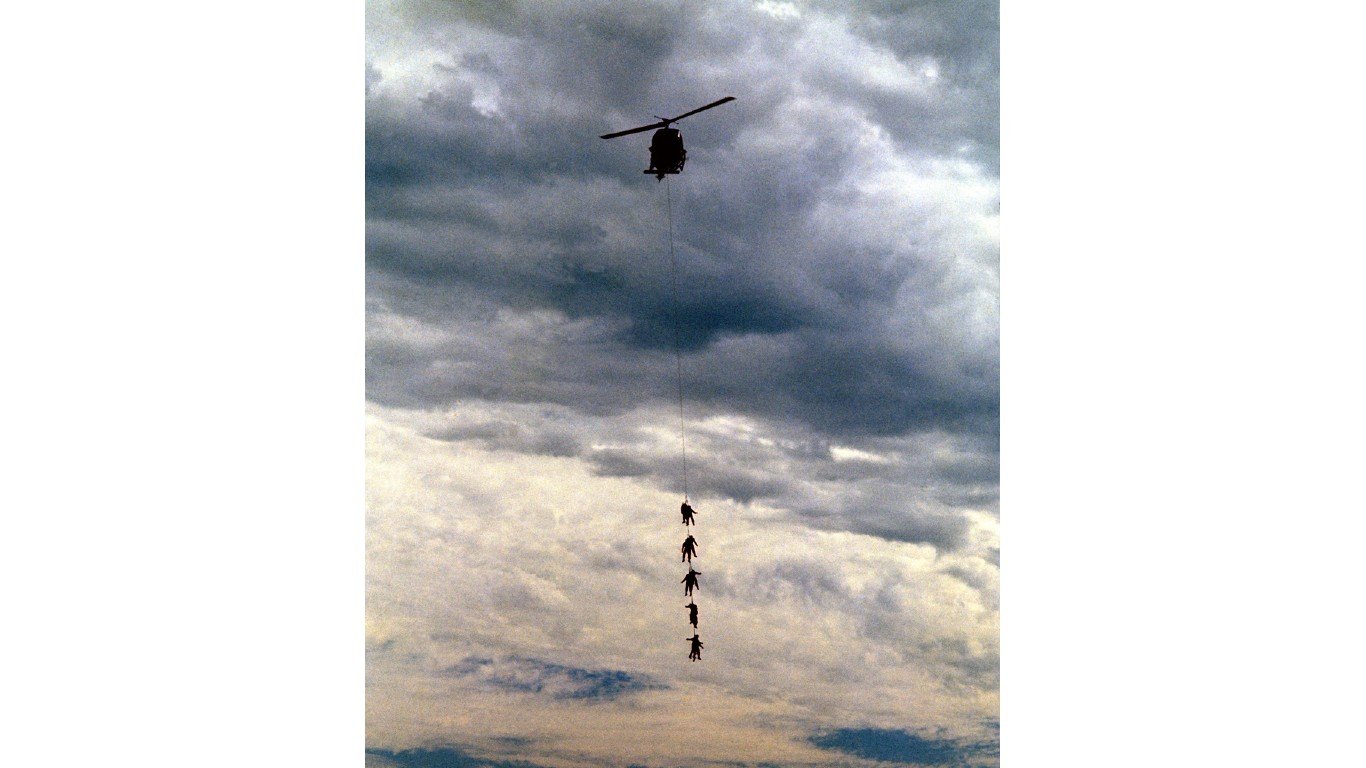
Ten Marine Corps test jumpers in “stick” formation are towed by a helicopter during tests of the special patrol insertion/extraction system at the Naval Aerospace Recovery Facility in El Centro, Calif.
North Vietnamese Army casualties
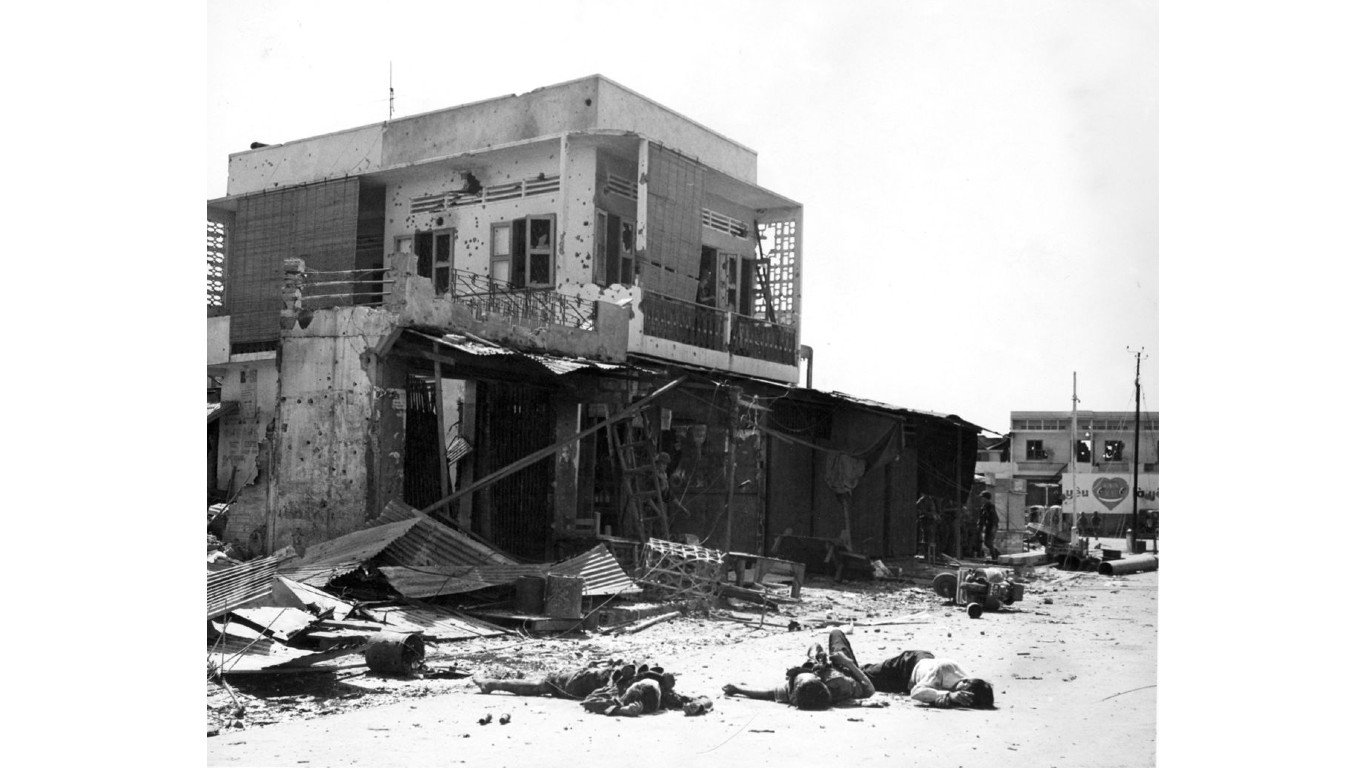
The bodies of three North Vietnamese soldiers lie in the street in Tan Son Nhut following a battle with U.S. and South Vietnamese troops.
The Air Force attacks Hanoi
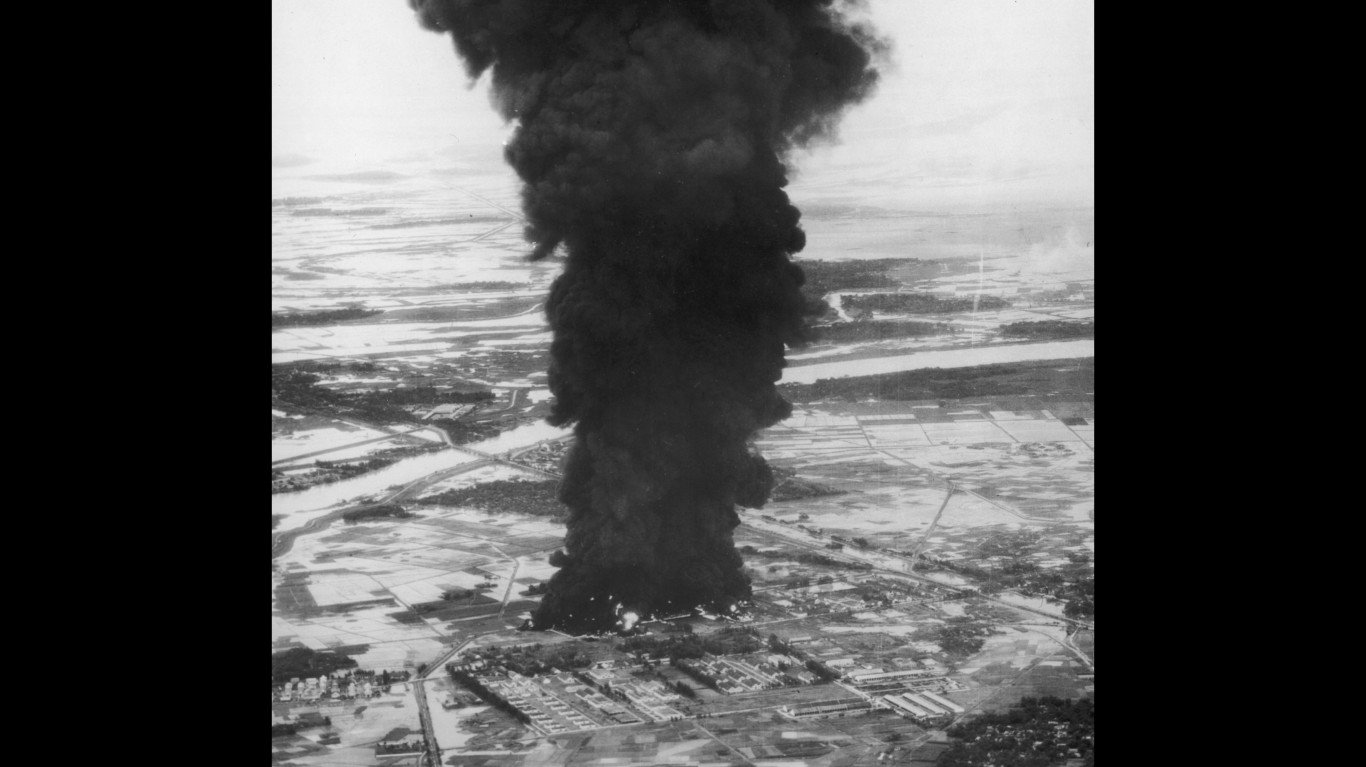
A plume of black smoke rises from a petroleum storage facility in Hanoi following a bombing run by U.S. planes on June 29, 1966.
Defoliating the jungle
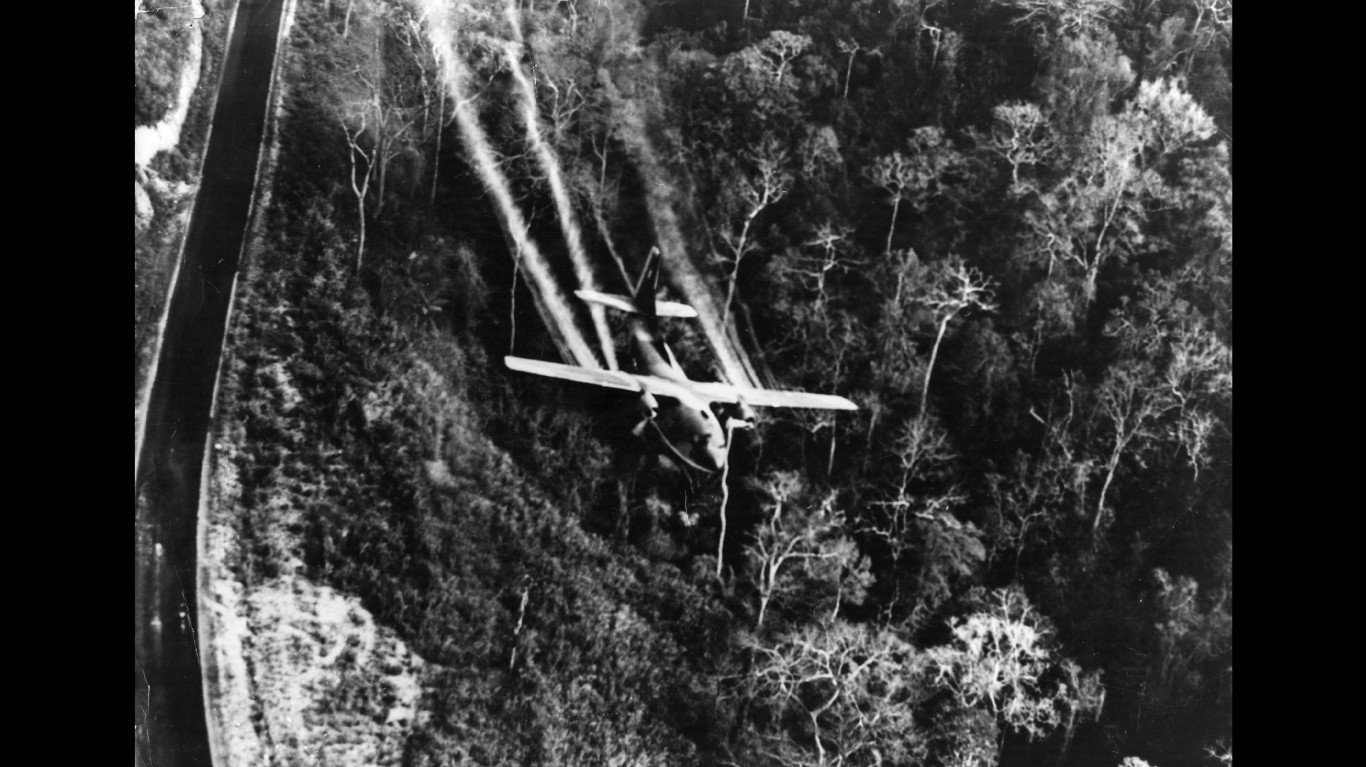
A U.S. Air Force Fairchild C-123 Provider sprays defoliants in the dense jungle growth in 1966.
Landing in a swamp
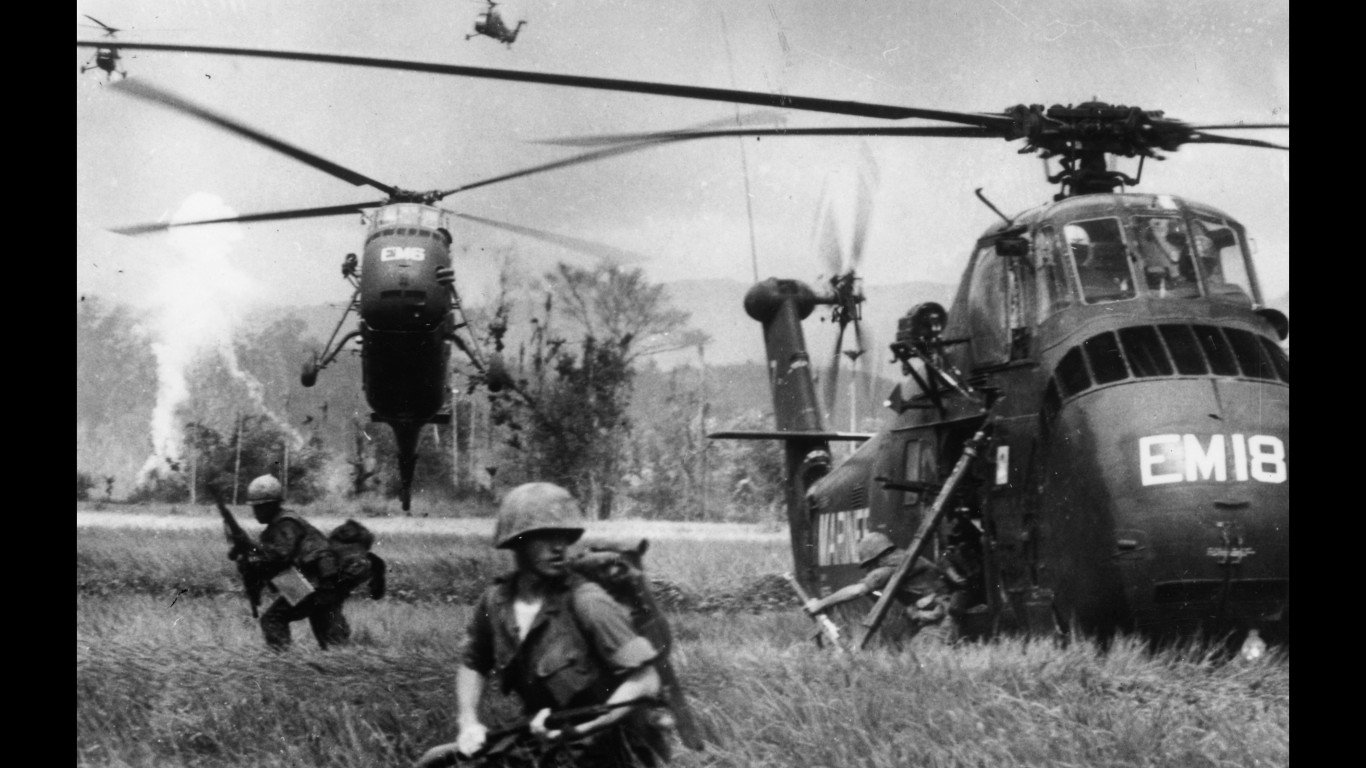
U.S. Marines alight from helicopters and find themselves waist-high in swampy fields, as they move in position to clean out a Viet Cong position (the white smoke in the background is from a phosphorous rocket used as a landing marker)
Helicopters In action
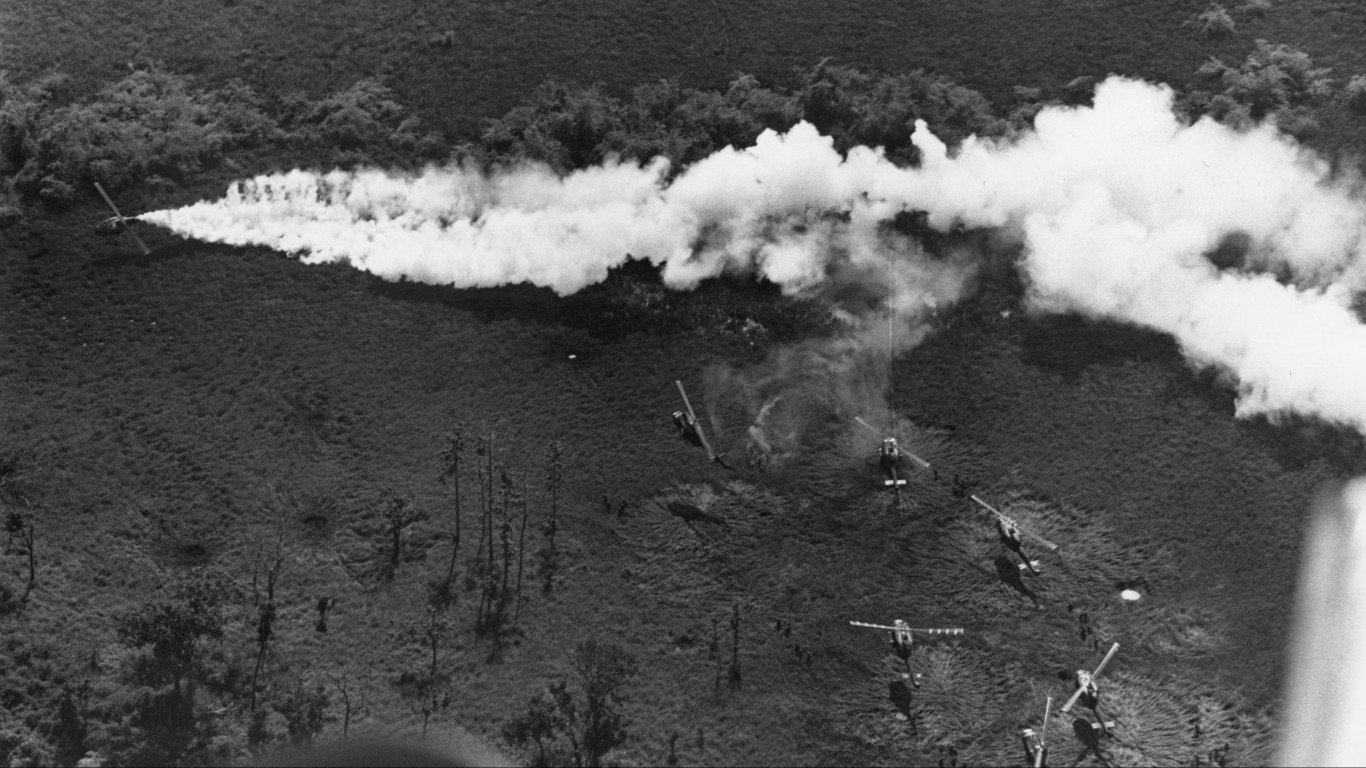
American helicopters in action against the Viet Cong, a common scene during the Vietnam War.
Running for the copter
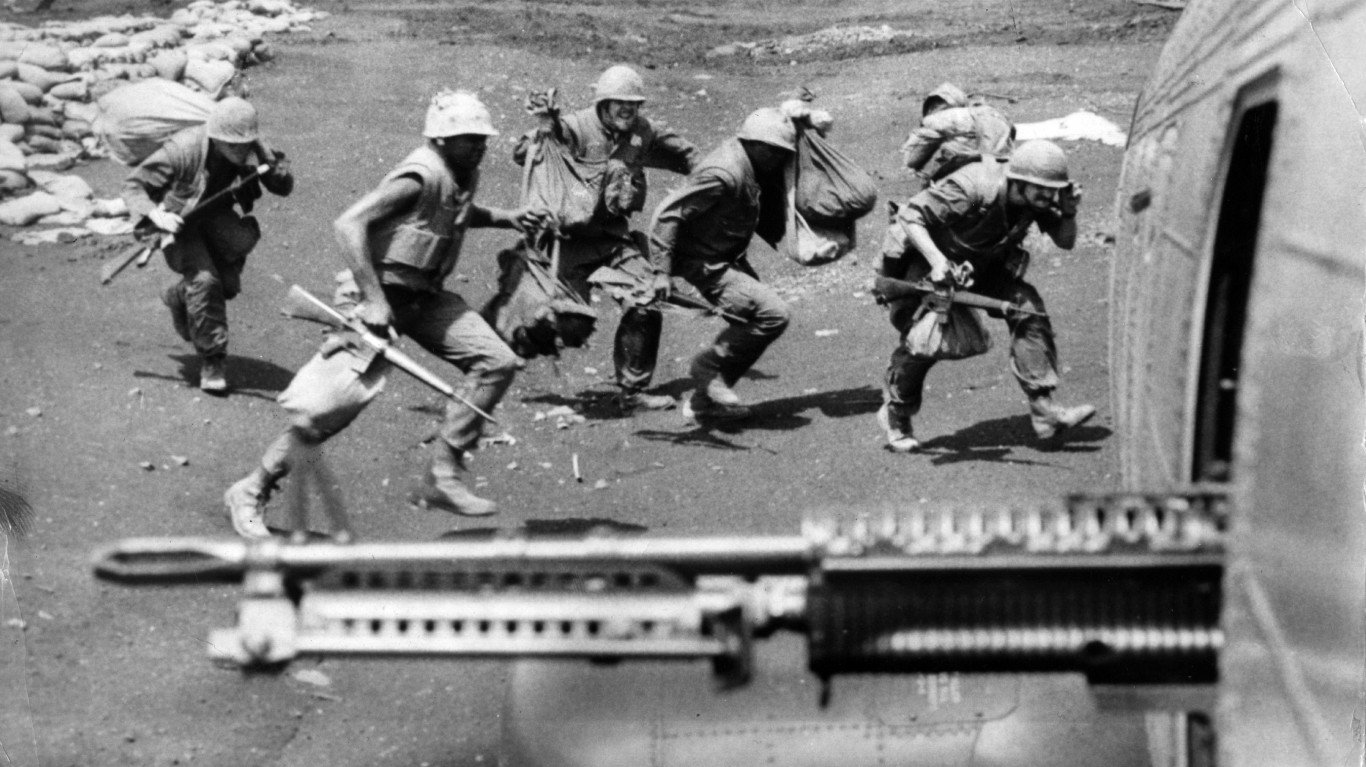
Marines scramble to avoid enemy gunfire as they board a helicopter at Khe Sanh on April 18, 1968.
Surveying the dead
Members of the 9th Infantry Division (Mechanized) survey the dead Viet Cong soldiers and weapons after the assault on the II Field Forces complex at the Long Binh Post, the U.S. Army’s largest base in South Vietnam.
Dead bodies in a ditch
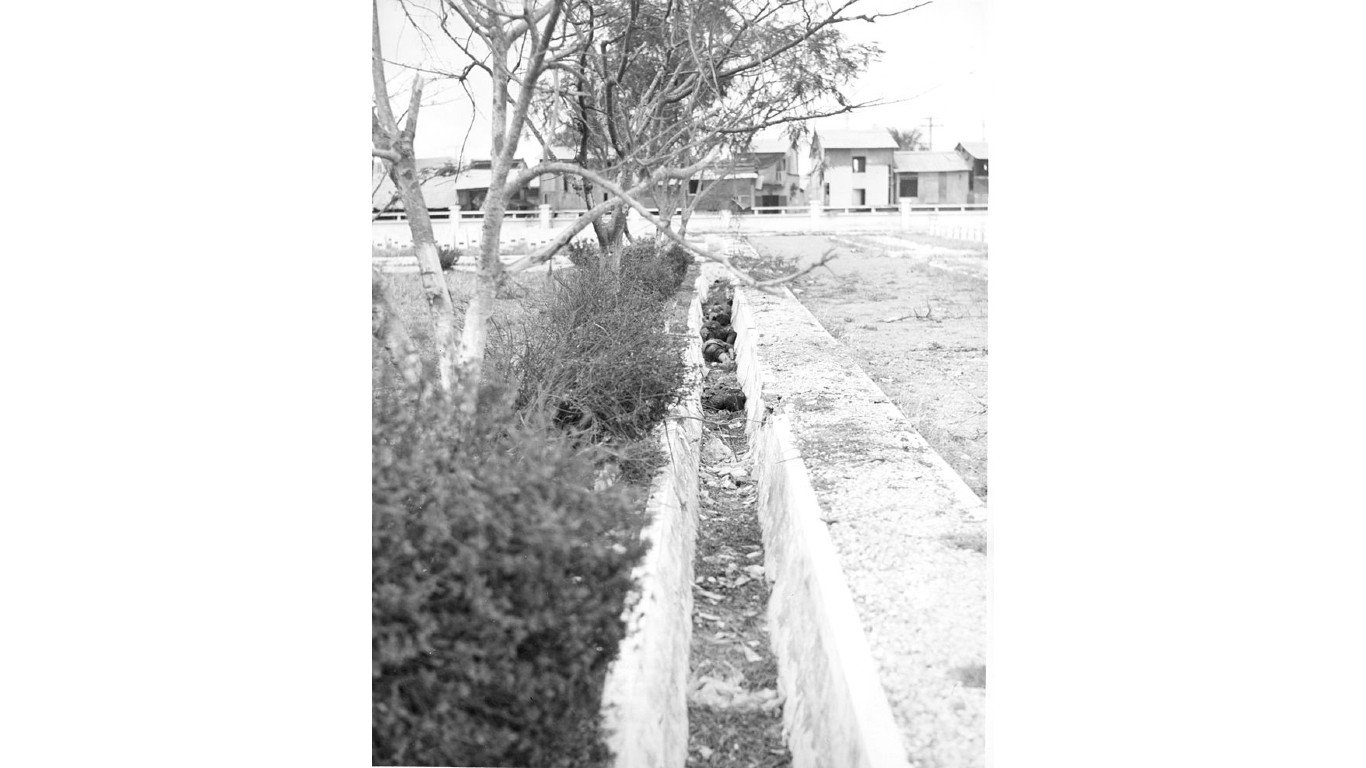
Viet Cong fighters killed by gunships and South Vietnamese soldiers lie in a ditch in the French National Cemetery near the Tan Son Nhut Air Base just outside Saigon.
Life goes on in Saigon

A dead Viet Cong fighter lies on the ground in Saigon during the Tết Offensive in January 1968, as people carry on as usual around him.
Firing a rocket
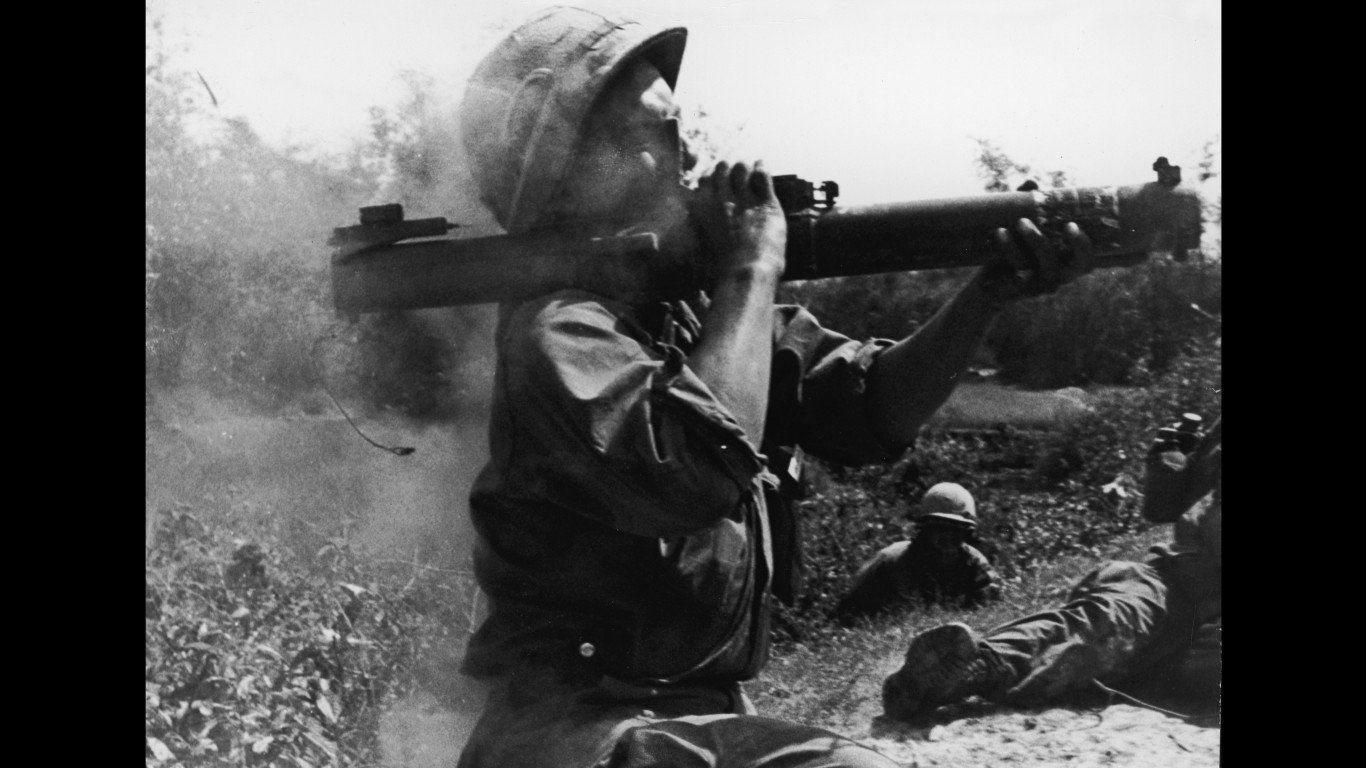
Specialist George R. Sanchez of the 101st Airborne Division fires an M72 rocket launcher at an enemy position.
Soldiers at rest

American soldiers sleeping in their foxholes between engagements on Aug. 26, 1966.
Shelter from the bombs
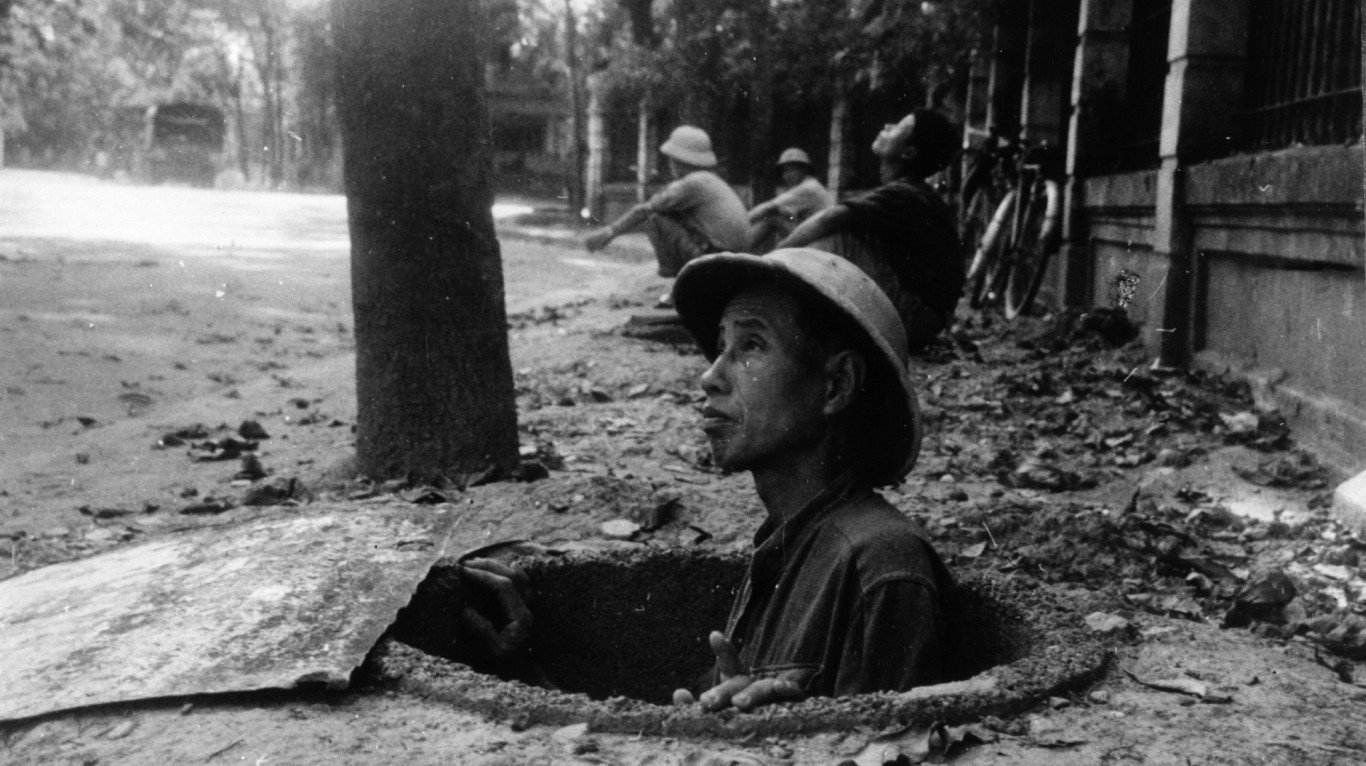
A resident of Hanoi takes refuge in an air-raid shelter on July 5, 1967 during an American bombing raid.
Destruction in Huế
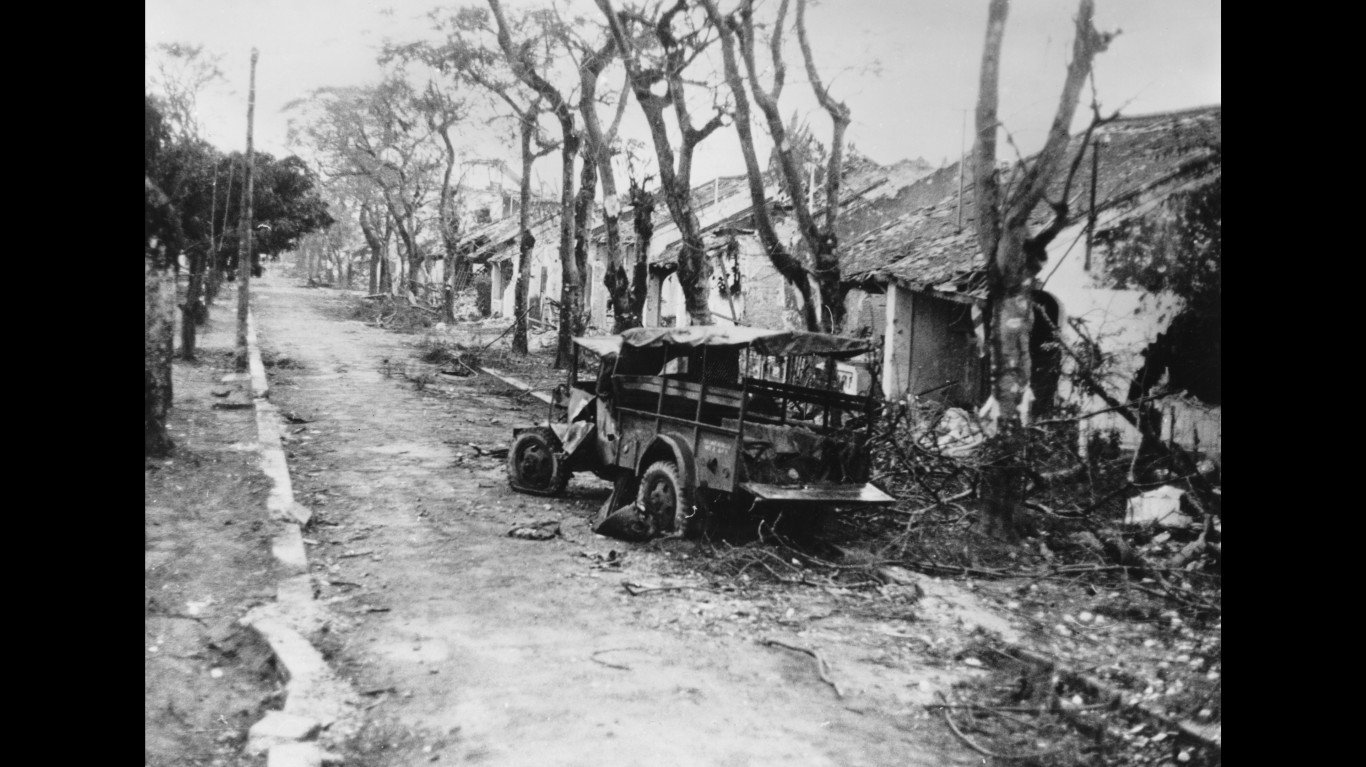
The aftermath of the Battle of Huế, in which American and South Vietnamese forces recaptured the Central Vietnamese city from the Viet Cong on March 15, 1968.
Viet Cong crossbow
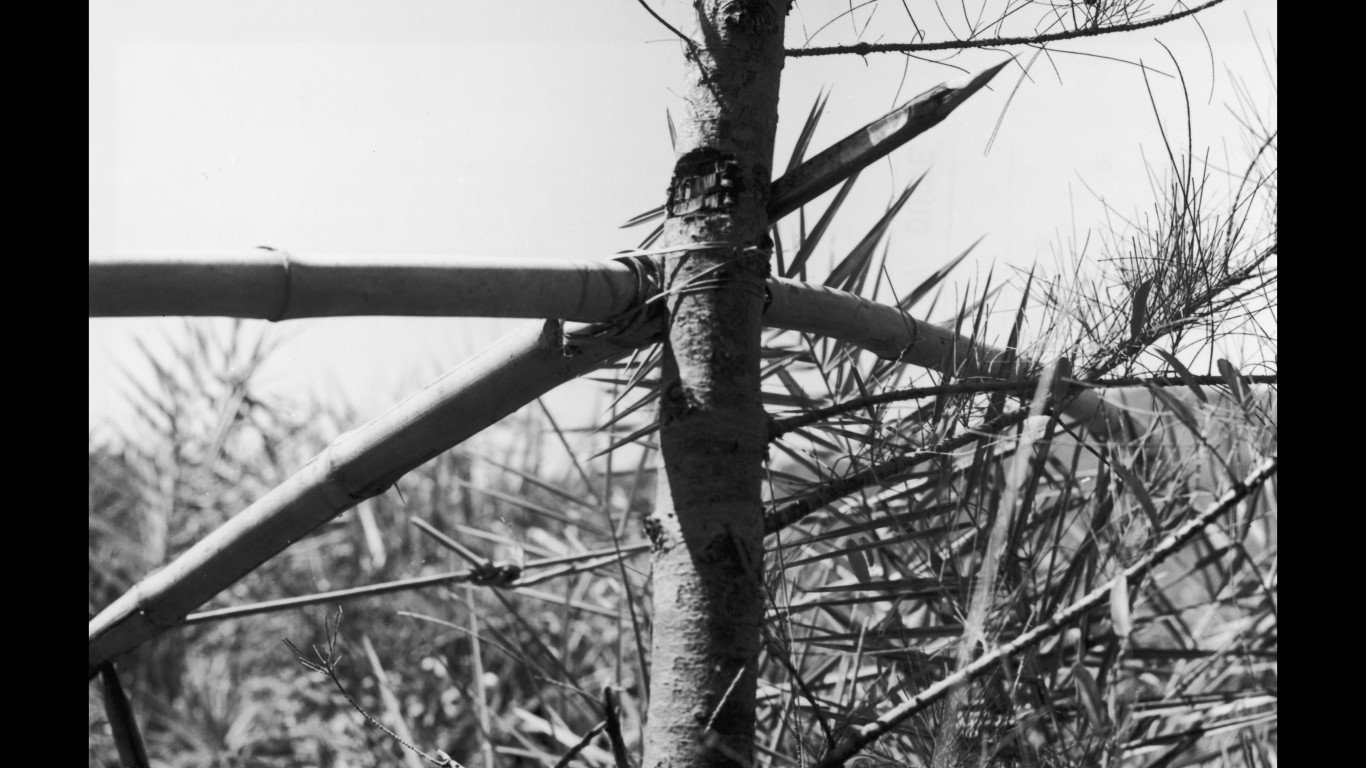
A large bamboo crossbow device used by the Viet Cong to fire eight-foot spears at low-flying or landing helicopters.
A tired soldier
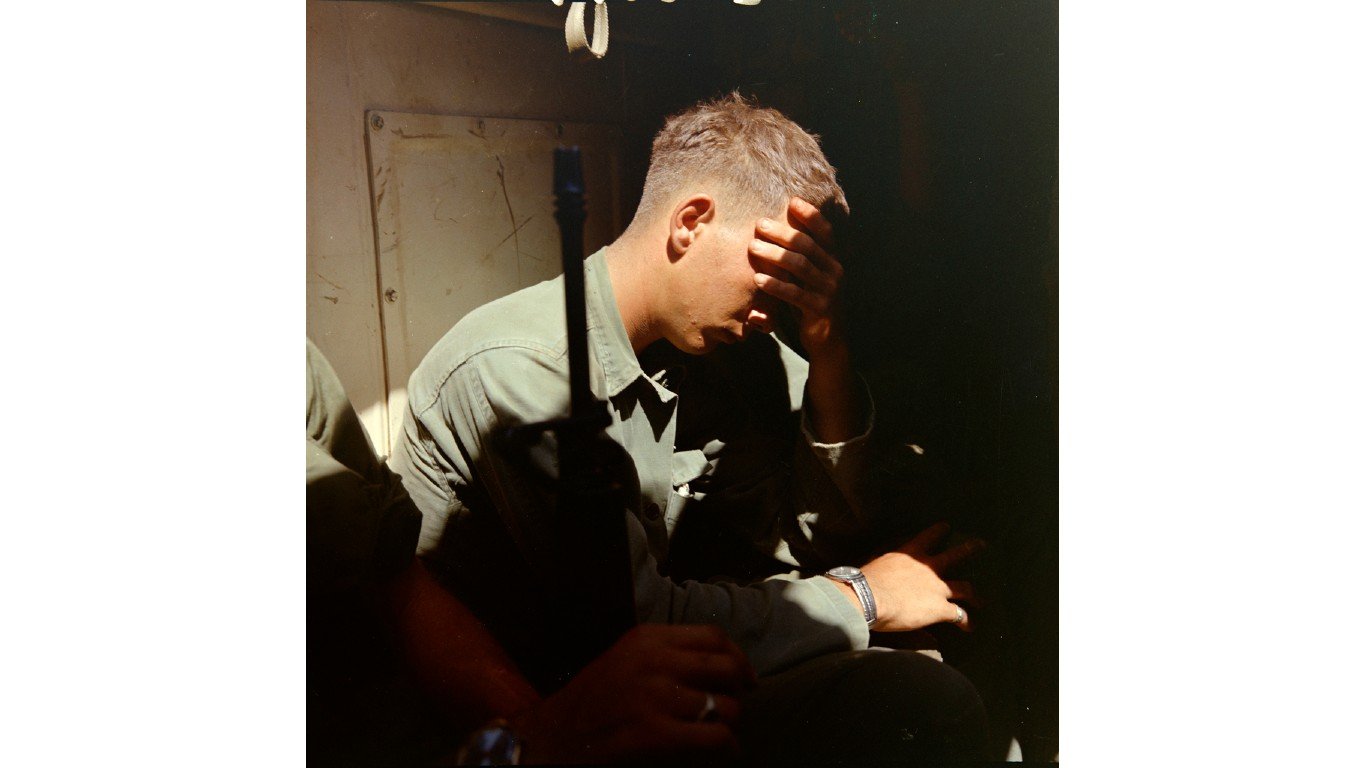
An American soldier rests inside an M-113 armored personnel carrier that was part of a search and destroy mission against the Viet Cong at Filhol Plantation by the Saigon River, 10 miles northeast of the unit’s base camp at Củ Chi in 1967.
A minefield on fire
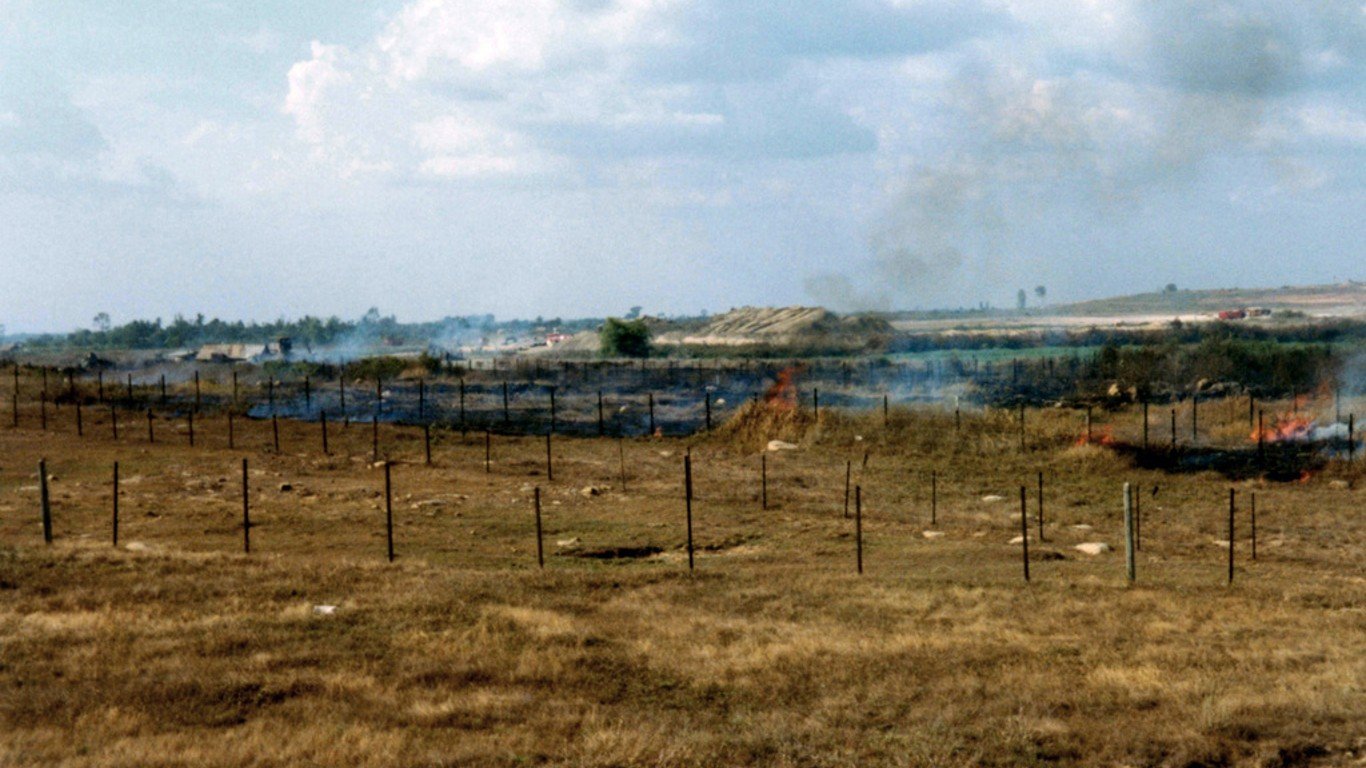
A minefield at Biên-Hòa Air Base near Saigon in 1966; somewhere in the area is a South Vietnamese soldier who was wounded after stepping on a landmine.
Bombers over North Vietnam
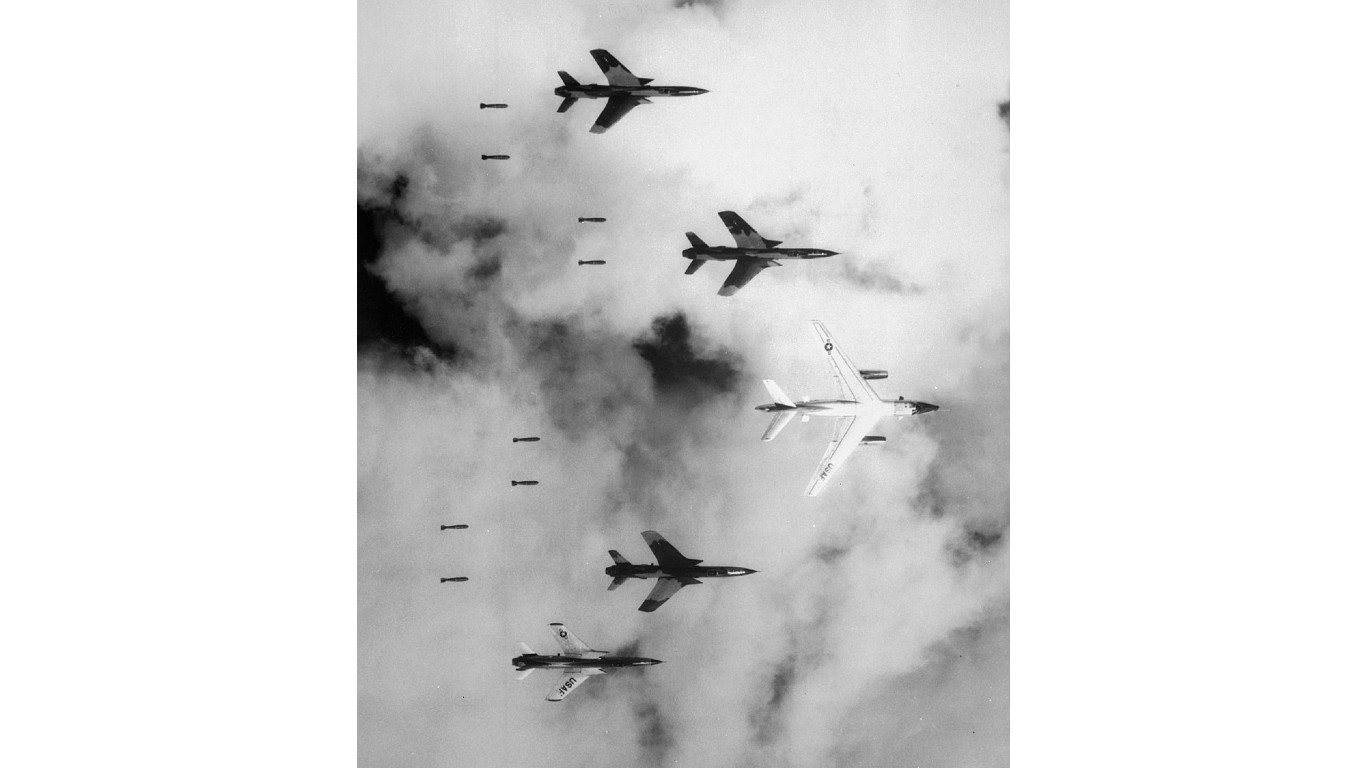
Flying under radar control with a B-66 Destroyer, Air Force F-105 Thunderchief pilots bomb a military target through low clouds over the southern panhandle of North Vietnam on June 14, 1966.
Soldiers in action
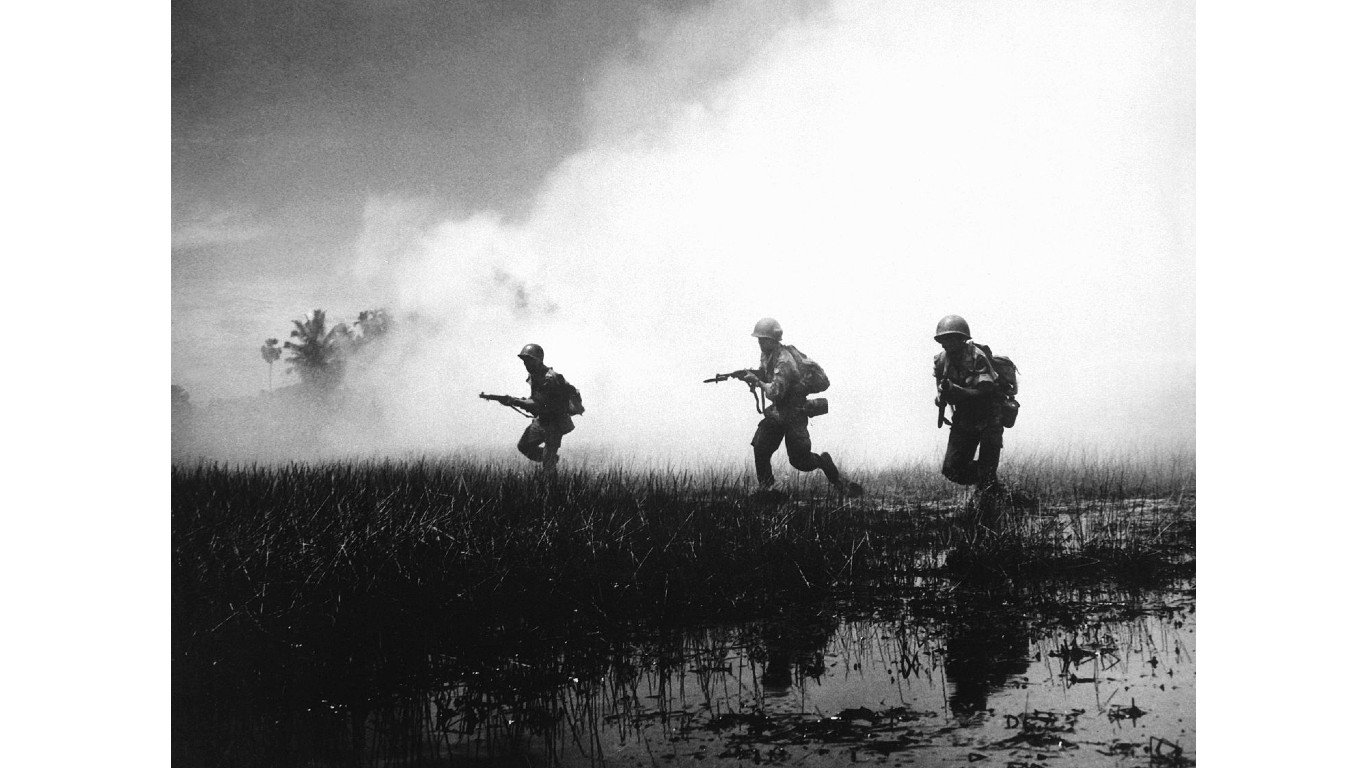
South Vietnamese troops advance against Viet Cong guerillas through the marshy terrain of South Vietnam’s delta region.
